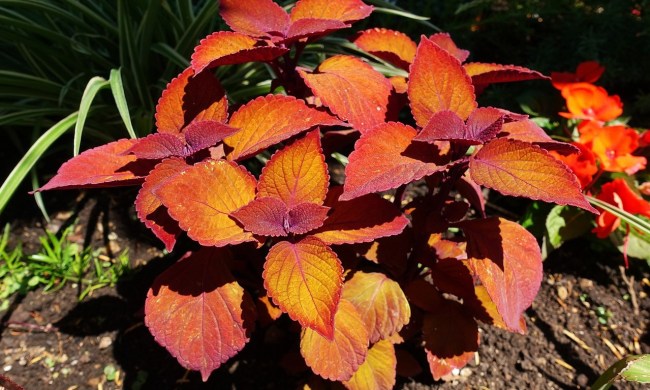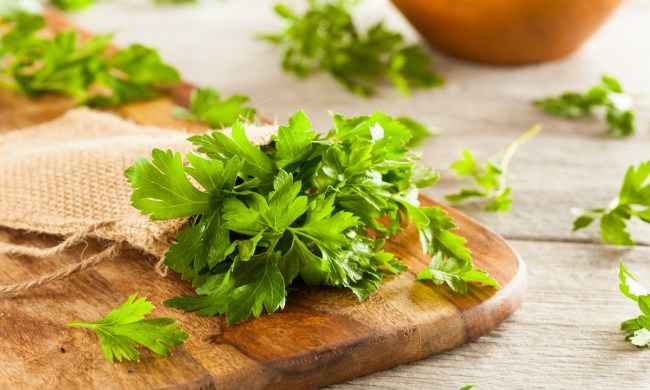Like many edible plants, corn thrives in full sunlight, so it’s not often kept as a houseplant indoors. However, not everyone has access to the best space or conditions to grow this warm-weather vegetable outside. Additionally, some gardeners actually start corn indoors if their spring weather isn’t ideal for it. So, can you grow corn indoors? The short answer is yes. Planting corn inside the home may be a tricky endeavor, but patience will leave you with a delicious homegrown snack.
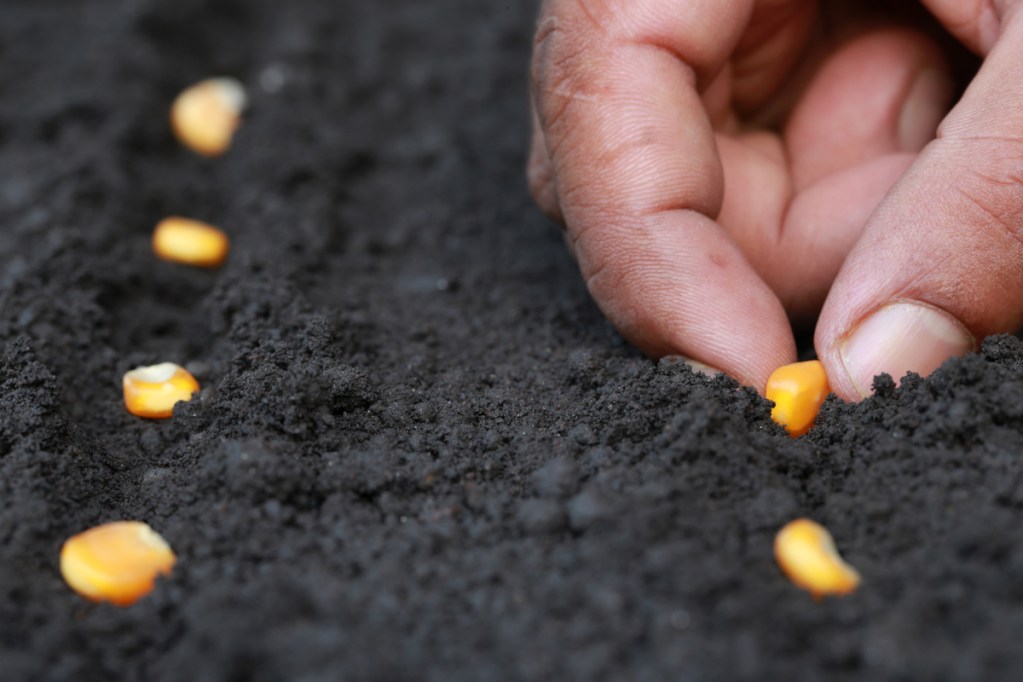
How do you get started?
Consider where you’ll actually be growing your plant indoors. Corn thrives when it’s planted directly into the ground, but you can grow it inside in a pot. It doesn’t transplant well, so it’s best to put the seeds right into a big container, such as a washtub or large planter. Choosing a medium with drainage holes (or creating some with a drill bit) is ideal for preventing root rot. Keep your space tidy by placing a saucer beneath your pot.
If you plan on moving your corn around, use biodegradable planting cells so that you won’t disturb your plants’ roots and shock them. Peat or wood fiber cells, for example, are great since you simply need to move them into the soil. Fill your growing medium with a nutrient-rich potting mix that retains moisture. Work a 10-10-10 fertilizer or composted manure into your soil before you put in your seeds—corn is a heavy feeder, so it’ll appreciate the extra boost.
Begin your indoor corn planting by placing one to two seeds about one inch deep and four to five inches apart. As the foliage grows, thin your collection out to four to five plants per large container to avoid overcrowding. It’s best to stick with the hardiest plants so they have plenty of space to grow and won’t need to compete for resources.

What conditions does corn like?
Wondering when to start corn seeds indoors? Keep an eye on the temperature. Corn is a relatively heat-resistant plant, and it thrives between 65° to 85°F. When you sow your corn seeds, make sure it’s at most a month before the last springtime frost—gardeners will typically start around late April or early May. Ideally, your temperature should be at least 60°F for seed germination. If you move your corn plant outside at some point, check that it’s warm outdoors before you move your seedlings.
Because corn normally enjoys bright, full sunlight, you’ll want to replicate this condition as closely as possible indoors. When left outdoors, corn plants get 14 to 18 hours of light. Mimic this indoors by keeping your plants as close as possible to a south- or west-facing window that receives plenty of light throughout the day. Supplement bright natural light with LED grow lights or fluorescent ones so that your leaves can produce enough energy to thrive.
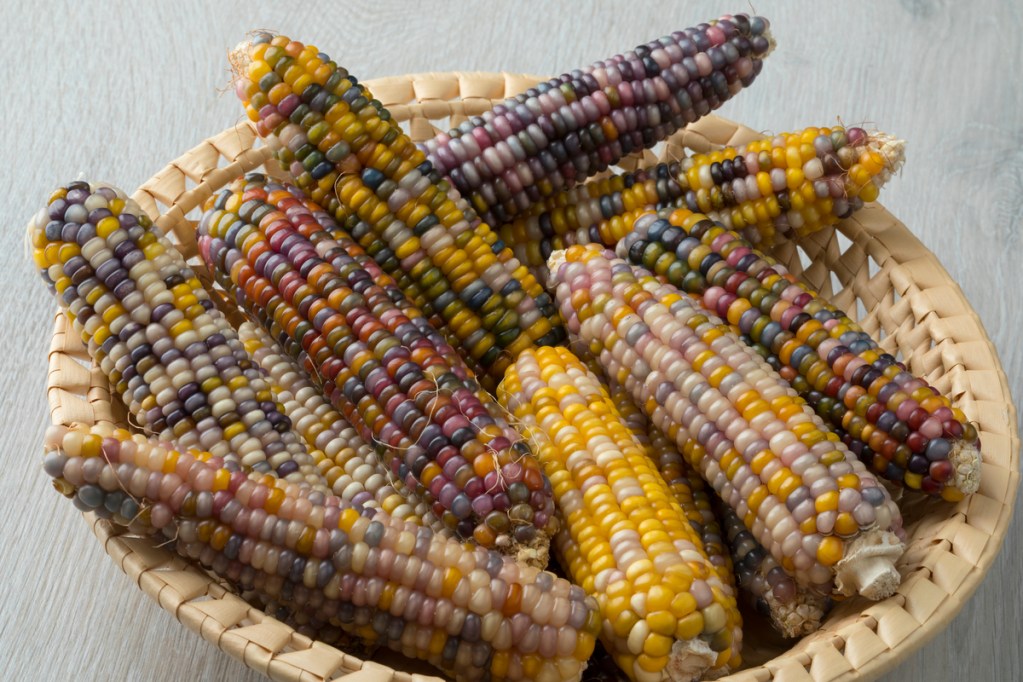
How to pollinate and feed your corn plant
Whether you’ve picked up corn from your local supermarket or grabbed an ear fresh from the garden, you’ve probably noticed that it has a silky material on it. The corn silk brings pollen to the kernel so that it can develop properly. Indoor corn won’t have wind for pollination, so lightly shake the tassels to release the pollen. Water at the soil surface instead of above your plants to avoid washing pollen off of the flower tops and reducing the number of kernels. You’ll only need to water your corn plant when the top inch dries out, and you’ll likely need to water your plants less if you grow them indoors. About every 20 days, feed your corn with a nitrogen-rich fertilizer.
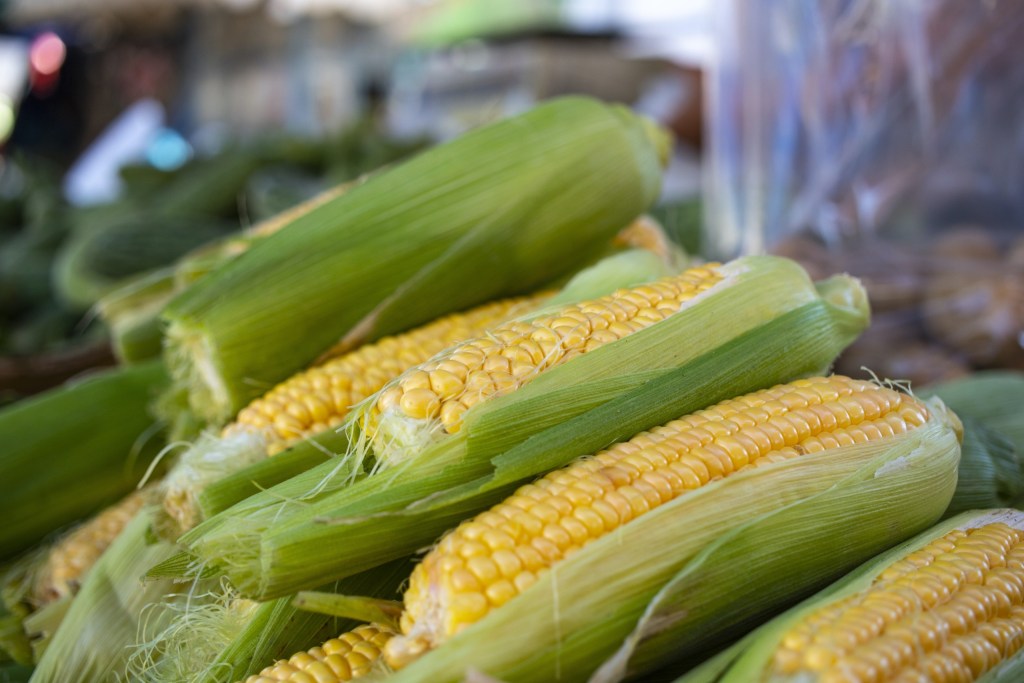
When to harvest your corn
After 60 to 100 days from planting, corn should be ready to harvest. A large corn variety will produce one to two ears per stalk, while a dwarf type can have up to three or four. Your corn ear should be ripe when the kernel juice is milky and when the silk turns brown. Simply twist the ear from your plant to remove it to clean and eat.
Growing corn indoors can be a challenge, but it’s not entirely impossible if you give your seeds ample space and sunlight. With due diligence, you may very well be on your way to picking corn from the comforts of your own home.


